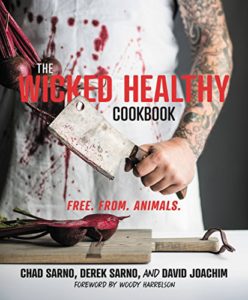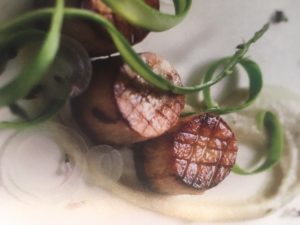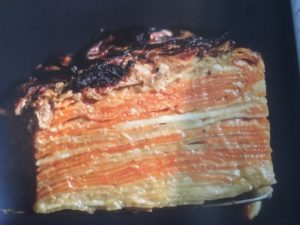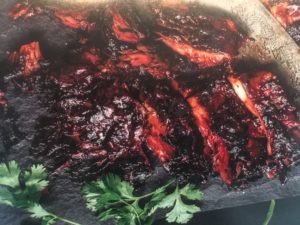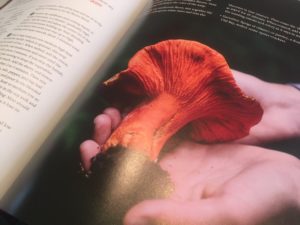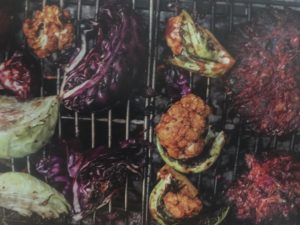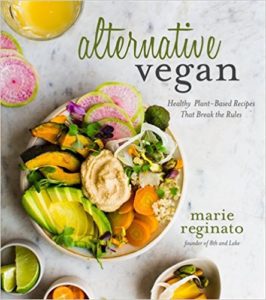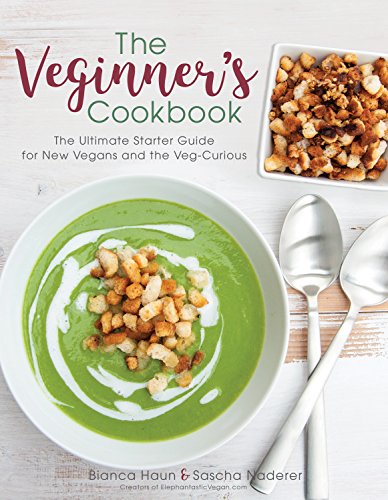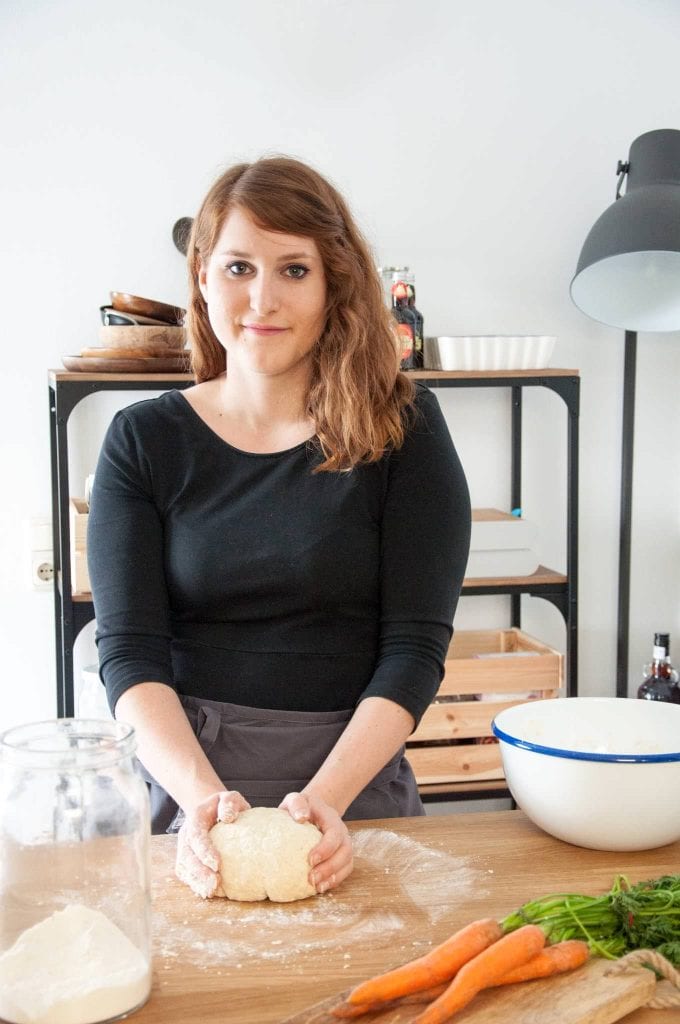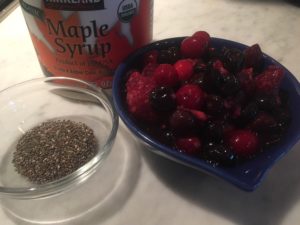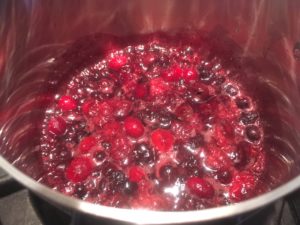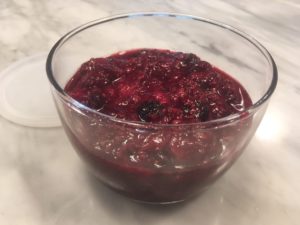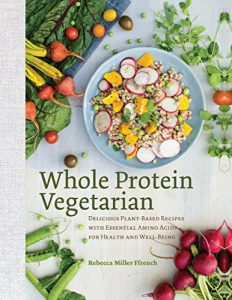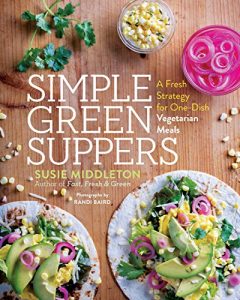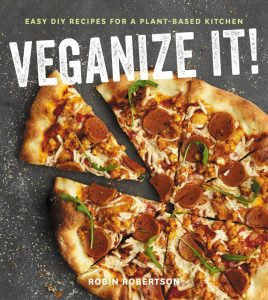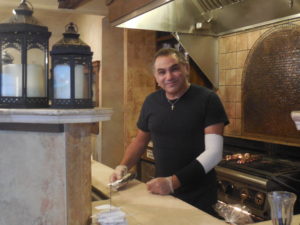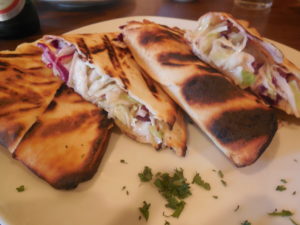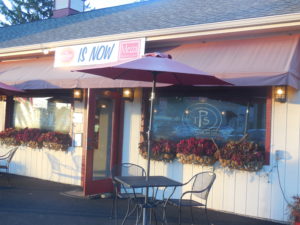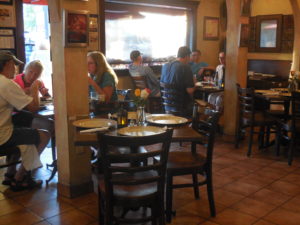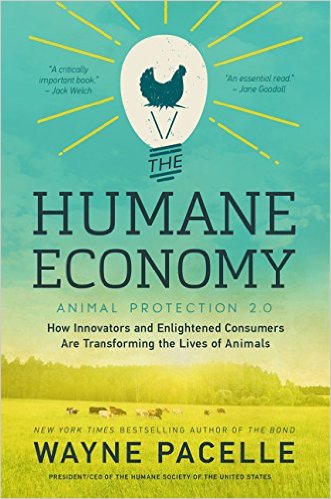Tag Archives: vegetarian
The Wicked Healthy Cookbook – Free. From. Animals. (Preliminary Review)
By Chad Sarno, Derek Sarno, and David Joachim
Grand Central Life & Style, Hachette Book Group, New York, NY 2018 $30
I love this book!!! From the minute it arrived, I was lost. Just skimming the essays, lists, Pro Tips and stunning recipes and images took me into the wee hours. Putting it down was not an option. Granted, my guilty pleasure is reading cookbooks. But this is a very special tome. Just when it felt like plant-based cuisine had reached its limits, with book after book adding a few new spins but churning the same ground, Wicked Healthy has seriously upped the ante. It’s fun, exciting, innovative, energetic, – the enthusiasm for the possibilities of plant-based gastronomy leaps off the pages. Dust off that mandoline!
To be clear this is not a book for every veg-forward cook. It is not an intro to the philosophy or a beginners’ guide. Some of the recipes are challenging, time-consuming and utilize esoteric ingredients that may require the resources of Whole Foods, Amazon, H-Mart, Thrive, a sophisticated farmers market and a few small mail-order houses – and even then you may have to be satisfied with recommended subs. It’s also, not surprisingly, a bit cheffy – many ingredients lists include other recipes so, unless you have a staff, there is sometimes serious time required. But it will be well-spent, satisfying time – even the process of discovering new or less-available ingredients will be well-spent, satisfying time. Bottom line, if all you do is just read The Wicked Healthy Cookbook, you can’t help but appreciate the expanded possibilities of plant-based cookery.
This is just my first review. I am going to cook my way through a good chunk of the book and post the results as I go. Starting with their bold new take on mushrooms: King Oysters, Maitakes, and Lobsters. What fun!! I can’t wait.
(One question – olive oil instead of avocado oil for high heat cooking?)
Alternative Vegan – Healthy Plant-Based Recipes that Break the Rules
By Marie Reginato
Page Street Publishing, Salem, MA. 2017
I love the sentiments and attitude in this book! After more than a decade on a relatively strict “whole food, plant-based” diet, we started a little rethinking – prompted by a series of research reports that stacked one question atop another. I worried about the quantity and quality of our omega-3 and protein intake. We were also feeling a little bored and needed to amp up the deliciousness of our food. We agreed it was time to break just a few of the rules: we added some pastured organic eggs, a little sustainable, low-mercury, high-omega 3 seafood and two specific European cheeses to our diet*.
A couple months later “Alternative Vegan” landed in my lap – encouraging the breaking of pretty much the same rules!
Aside from the affirmation provided by the author (saying just what we wanted to hear), this is a solid effort that adds variety and originality to the cookbook shelf – clear recipes that work, full-page, bleed images of every recipe that inspire, and a thoughtful approach to food in general. Wherever there is rule-breaking, the author provides a vegan alternative.
The recipes tend to depart from the expected which is, for those of us with dozens of plant-based cookbooks, a welcome relief. On the other hand, these are not “throw dinner together in a few minutes” recipes. Not even the 30-minute ones. The ingredient lists tend to be lengthy but not esoteric – if you’ve been eating plant-based for a while, you’ll find most of them on the pantry shelf. Cupboard Curry is just that and Minty-Pistachio Falafels with Tzatziki gives these old stand-bys a fresh flavor profile. Also welcome are two takes on sliced “pre-cooked polenta rolls” that get a yummy dish on the table quickly.
As a lover of dinner leftovers for breakfast, I found the Morning Glory Bowl even better; it’s a made-from-scratch, well-seasoned, Swiss chard, spinach, fennel, avocado and dill breakfast (or maybe brunch) dish. The recipes bounce between creative riffs on traditional favorites and some really unique ideas – and that originality extends to the unexpected chapter titles. There’s Breakfast and Dessert (Dark Chocolate with Lime Zest & Pumpkin Seeds!!) – but standard headings stop there. The chapter on Bento Boxes and Buddha Bowls adds some new perspectives as does the Ex-Rated chapter on pizza and pasta. But the main events are mostly in Eating on the Vedge.
I do take issue with some of the “alternative” choices – IMO, eggs should be “pastured” as well as organic and the seafood choices should align with the Environmental Working Group’s detailed assessment of sustainable, low-mercury and high omega-3s. But those are my personal choices and all of the seafood recipes will work just fine with other species …..
*The specifics of our alternative choices are covered in the post – “Shhh! We’ve Decided to Break a Few Rules!”
The Veginner’s Cookbook – The Ultimate Starter Guide for New Vegans and the Veg-Curious
by Bianca Haun and Sascha Naderer
Skyhorse Publishing, January 16. 2018
My first reaction to this beautifully photographed, inviting tome was “What a great name! How come no one else thought it?” And it is actually a perfect name. This is a nicely done intro to vegan food. If you have been cooking and eating a plant-based diet for a while, or are deep into the various nutritional perspectives, you might not find a lot new here. But if you are thinking about dipping a toe in the vegan waters, it’s a very solid beginning.
All of the culinary bases are covered; the authors provide a current overview of the plant-based landscape – and have even included a couple of “finds” like kala namak (Himalayan black salt) for an eggy taste. The full-page color photos of the finished dish are excellent – and really required for beginners. The goal is clearly to ease the first-timer into the concept of meat and dairy-free cooking and eating without adding the additional challenges of limiting some oils or using only whole grains and whole-foods. It is a reasonable approach.
The authors, Bianca & Sascha, are an Austrian couple who are passionate about their relatively recent adoption of veganism and share their experiences on their blog ElephantasticVegan.com as well as in this new book. They also provide a little hard-won guidance for newbies who are navigating the sometimes treacherous social waters of “well a little won’t hurt, will it?” or “where do you get your protein?” Sascha calls it the “Landmine Situations.”
We also appreciate the Bianca’s Kitchen Hacks that are scattered throughout the book. These are little hints for the newbie and some additional thoughts for the more experienced.
Be aware: The nutritional philosophy that underlies their book is straight-ahead vegan (as opposed to whole-foods, plant-based): veggies, grains, nuts, seeds, oils (especially canola oil* – which is concernful). You won’t find a lot of whole grains, gluten-free or sugar/sweetener-free recipes. Their main concern with white sugar, for instance, is that it is vegan (and not made with bone char) rather than that is may be very bad for your health. Baking begins with white all-purpose flour with a nod to some options (that said Healthy Breakfast Muffins are made with oat flour). That is not a criticism as much as a buyer-aware alert. (Also for recipes that contain miso, be sure not to let it boil or you will kill off the probiotics.)
We love the Small-Batch Strawberry Chia Jam – quick and easy and delicious (so convenient when you discover you’ve just run out – see images below). The last time I used frozen organic mixed berries with a smidge more maple syrup. And the curries are inventive and easy, as well. The Hummus Four Ways are strikingly beautiful and the Shake and Bake Sweet Potato Fries inspiring (a keeper in this house)! Love the banana-based “Nice Creams”, too. I am surprised by the canned lentils in the Thyme Lentil Soup (unless you are on a Low FOD-MAP diet). Dried lentils would have taken just another 15 or so minutes.
Bottom line: This would make a great gift for someone who has expressed interest in experimenting with a plant-based diet. The recipes will be successful and delicious – and visually appealing. It will get most people over the hump and show them that this is a viable diet. And, even if they don’t go the whole way, they will have found a lot of recipes that will stay in their rotation no matter what.
(*Canola Oil – perhaps the canola oil available in Austria is less tainted than what we can get in the US. I substituted Avocado oil or Coconut oil for the canola oil in the recipes that I tried. Also subbed tomato sauce or tomato puree for tomato passata.)
My Take on “Veganism”
Up until a dozen years ago, we’d been innocently and happily eating a whole-foods, sugar-free, “healthy diet” for about three decades; it included low-fat dairy, white meat chicken and fish. But then, my husband “pushed through” on a New York Marathon feeder race, collapsed and was unceremoniously hauled off to a local hospital. That was when we learned that he had plaque on his arteries! I took this as a personal affront to my hard-won nutritional knowledge and culinary expertise.
After listening to my angst-ridden breast-beating, a friend handed me the “Eating” DVD (3rd Revision) – it was a revelation. The interviewees weren’t McDonald addicts or slab-of-beef on the plate types; these were people who’d been eating just like us. And their health profiles were just like ours. Once they embraced a whole-foods, plant-based lifestyle – aka veganism – their health improved: plaque disappeared from arteries, insulin requirements nose-dived, weight slid off…… We were smitten and embraced this new life-style with vigor and enthusiasm.
Today we’re still eating a primarily plant-based diet. We know that we’re healthier with it, that animals suffer less because of it and that the planet is better off (we could trade our Prius for a Humvee and our carbon footprint would still be impressive). But we’ve lost the religiosity. We prefer the term WFPB over Vegan because it is not so loaded. We still use the terms vegan or strict vegetarian in restaurants because plant-based does not compute with servers. But to the rest of the world, we call it a whole-foods, plant-based diet.
Over time, we’ve gotten easier with it. When we travel or dine out – especially at friends’ homes – we expand our options to include wild-caught salmon, mussels, oysters, brook trout and a couple other low-mercury, high omega-three, sustainable species (kudos to the Environmental Working Groups for simplifying this). Blue crab and lobster also make the few-times-a-year list because there are Crab Feast and Lobster Bake traditions on both sides of our families. On occasion, we also eat free-range “humanely raised” eggs. It makes life easier for everyone and, frankly, we welcome these occasional additional options. That said, when we are home, we eat a pretty strict WFPB diet – we like it; it’s easy and it allows us to “regroup” especially after long bouts of travel. When we entertain, it’s almost always a WFPB meal as well; we work hard at delivering luxuriously delicious meals that usually end with a dark chocolate dessert – and, hopefully, make the lack of animal products unnoticeable and irrelevant.
We don’t proselytize and only discuss our food choices when asked; we hope that this low-key approach might make the plant-based concept less off-putting and more appealing. It seems to us that the fewer animal products one eats and the more organic produce one consumes, the better off everyone is (for organic, we shop with the EWG’s Dirty Dozen [actually 20] and Clean Fifteen lists). As Columbia Professor Emeritus Joan Dye Gussow would say to the “Earth Friends” fourth graders: “it’s better for both worlds you inhabit – your body and your planet.”
We are fans of Meatless Mondays, Mark Bittman’s “VB6” (Vegan Before 6 pm), and any other variation that encourages people to dip a toe into this lifestyle. This is not a religion; it is a choice that is a win-win-win for you, for the animals, for the planet. Our philosophy is: just do what works for you; no one is taking notes.
Whole Protein Vegetarian – Delicious Plant-Based Recipes with Essential Amino Acids for Heath & Well-Being
By Rebecca Miller Ffrench. The Countryman Press 2016 $27.95 (Amazon $18.50/ Kindle $14)
Ms. Ffrench approaches recipes and daily menus from the very particular perspective of amino acids – in other words protein. There is a mantra in the plant-based world that it’s impossible not to get enough protein. That we actually consume too much protein and the invariable question from the canivores “how do you get your protein?” is mock-worthy.
But the author demonstrates that that might not be as true as we had assumed I was surprised when taking a hard look at the protein counts of some of the pulses and vegetables that we normally consume. If adequate protein is a concern, then this might be a useful reference.
It’s a handsome, hard covered book with bleed and full-page photos of about half the recipes. The recipes themselves are not particularly adventuresome or noteworthy – assuming you are steeped in current plant-based culinary arts. If you are not, then this is an excellent primer. I prepared a couple and they were fine family-dinner fare – but not guest material.
Simple Green Suppers – A Fresh Strategy for One-Dish Vegetarian Meals
by Susie Middleton- Roost Books April 11, 2017 $24.95 (Amazon $14)
This is, as the title promises, a book of vegetable forward family dinners that strives for the unctuousness of meat-meals, the delciousness of deeply layered flavors, and the freshness of right from the garden produce. It is a beautiful tome, with lots of enticing full-page bleed photos from Randi Baird, that makes you want to dive in and start cooking
Ms. Middleton approaches the organization of her one-dish family suppers from an unusual perspective; each chapter focuses on a specific, but varied, base to which veggies are added: noodles, grains, beans, leaves, toasts, tortillas, eggs and broths. And each of those bases covers the whole landscape of, for instance, noodles – soba, udon, rice noodles, pasta, couscous, somen, egg. If you “go with” this horizon-broadening perspective, it can really step up the nightly dinner grind – and add some fun to the shopping and prep. Each chapter is preceded by a couple pages of useful “Tips and Strategies” – including prepping your larder. These aren’t ten minute projects and the ingredient lists can be a little bit daunting, but most can be executed well within an hour – and the results are far from fast food. There are some new concepts and fresh, upgraded re-works of old favorites.
But be aware this not a totally plant-based book. There is a chapter, as noted, on eggs and some dishes in other chapters include cheese and dairy. But most of these ingredients are, IMO, easily substituted with vegan replacements since they are not center stage – or simply skipped. The egg chapter may be doable with the new Follow Your Heart VeganEggs (if you don’t have an issue with a primary ingredient – algal).
Note that the number of servings varies from two to three to four. So that means doubling or halving depending on your situation. As an empty-nester, I welcome recipes for two since I often find myself cooking the whole recipe for four – and then there are often no leftovers! The scale speaks.
I am looking forward to cooking my way through this lovely book and will post some of the results – especially when I’ve used dairy or egg replacements.
VEGANIZE IT! Easy DIY Recipes for a Plant-Based Kitchen
BY Robin Robertson – Houghton Mifflin Harcourt March 7, 2017. $25. Amazon $14.92/ Kindle $12.99
Another really good book from one of the top vegan cookbook authors. Robin Robertson’s books are classics and I have most of them. So I had high expectations for this one. It’s a beautifully designed book with a stiff fold-in cover for marking your place and lots of full-page photos and chapter intros that sometimes bleed across a double-page spread.
The chapters are similar to those of an omnivore cook book – with a twist. Plant-Based Meats, Vegan Charcuterie, Instead of Seafood, Dairy-Free and Egg-Free, Too…. all very enticing.
Since 2010, I’ve been turning to Steen & Newman’s “The Complete Guide to Vegan Food Substitutions: Veganize It! Foolproof Methods for Transforming Any Dish into A Delicious New Vegan Favorite.” And collecting recipes from chef-written cookbooks, blogs and the www. There have been so many advances in plant-based cooking in the past six years that I thought Roberstson might, essentially, be providing an updated, cutting edge version of “The Complete Guide…”. And in some ways she has. But I was hoping for some break-through ideas instead of riffs on existing chef or blogger-developed veggie cuisine. Or at least a compilation of those best of the best ideas. But I misunderstood the intention – which might have had something to do with the similarity of the titles…..
Instead, the book provides “clean” vegan recipes for lots of basics like sour cream cream cheese, cheesy sauces, ricotta, hollandaise, feta, butter!, gravy plus many, many more. Beyond basics are burgers, pulled pork, fish ‘n chips, sausages, meatballs, sea scallops, five bacon recipes, and more. Many of these products are available in the supermarket freezer or refrigerator case but made with a laundry list of additives and other unpronounceable ingredients. So this is why I add the word “clean.” Ms. Robertson first chapter includes home-made versions of pantry items (many of which are not vegan in their store-bought versions). Each chapter also includes more involved recipes that use a few of the basics made from the included recipes or, if time is short, from store-bought versions.
I started my review by preparing a couple of the recipes. First was Creamy Ranch Dressing that starts with 1 cup of mayo – it had good flavor but the mayonnaise was too prominent so I cut it with a little almond milk that also made it more pourable. The second one was Cheddary Sauce which is pictured below (these are my photos, not from the book). This was a tasty cream sauce and it worked well over a steamed veggie and quinoa bowl, but it didn’t taste anything like cheese, especially cheddar, which the name implied. I made it in a Vita Mix so just letting it blend a little longer heated it up – once the cashews had been soaked, it was quick and easy despite a lengthy list of ingredients. I will make it again – perhaps amping up the seasonings and playing with the liquor choices. Next up are the five bacon recipes and the pulled pork.
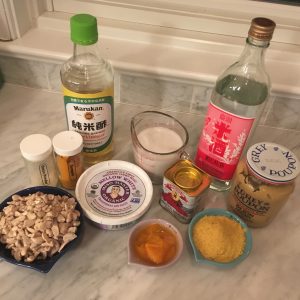
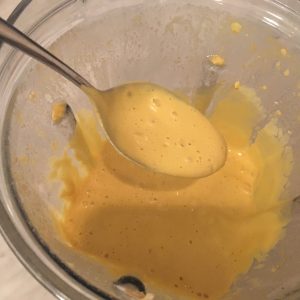
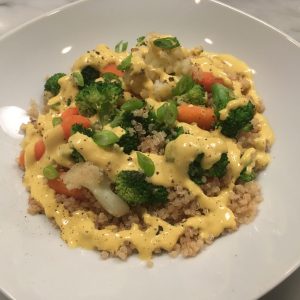
A couple nitpiks: Recipes labeled with cheesy names have to taste cheesy – nooch just doesn’t taste cheesy to me. And there isn’t any nutritional info – I’d like to know the calorie count and the percentage from fat – is it a 30-cal tablespoon or a 125 cal one? Also while the cashew craze has been well addressed, alternatives would be appreciated (since cashews are high-FODMAP) and a little more on aquafaba would also be helpful and suggestions for those among us who choose oil-free.
Bottom line – this book is a keeper. There are enough interesting concepts in here to encourage experimentation. It is not haute cuisine, but it is reliable, tasty, clean vegan. And that’s worth a lot.
The Humane Economy: how innovators and enlightened consumers are transforming the lives of animals
by Wayne Pacelle, Presdient & CEO of the Humane Society of the United States. William Morrow. April 2016. Hard Cover $18.38, Paperback $12.99 (March 2017), Kindle $12.99
Mr. Pacelle covers the whole enchilada of animal abuse in the US – from puppy mills and dog fighting to battery cages and gestation crates to animals in film, wildlife management, animal testing to stepping outside the US to Africa’s wildlife. It’s an upbeat, well-done, informative overview that hails the HSUS’ successes but with only one chapter devoted to each issue, depth, naturally, suffers. That said, the case studies on PetCo and PetSmart that describe how lobbying moved them from selling puppies and kittens to partnering with local shelters to host pet adoptions were impressive. My interest in reading it was to hear his perspective on factory farming and if that is your sole interest, then the two chapters devoted to this topic might not justify the purchase, but if your library has it, then by all means borrow it. It’s a good read and will draw you into areas of animal abuse that may not have been on your radar screen. Note: I read this in hard cover; there’s also Kindle version and in 2017 a paperback – if the Kindle version is anything like the posted sample (devoid of paragraph spacing) then reading in that format will be challenging.
Mala at Wailea Marriott – unexpected plant-based meal in a spectacular setting
Searching out plant-based, vegan options in Maui proved a positive and fun adventure. The biggest surprise, not listed anywhere, was the restaurant at our hotel. What a surprise! Mala has a separate Gluten-Free & Vegan Menu. Chef Mark Ellman and his business partner Shep Gordon teamed up with Top Chef Finalist Chef Sheldon Simeon (and one of Food & Wine 2014 Best New chefs) to create delicious, organic and locally sourced dishes that are an eclectic blend of Mediterranean and Hawaiian flavor profiles.
The setting is simply gorgeous. The upper level airy dining room features a clean, contemporary, teak-accented look with long, unobstructed water views. If weather permits, dine on the lanai.
On the Gluten-Free and Vegan Menu , there are four vegan starters, one salad, and a disappointing single entree. But we found that the server and chef were happy to work with us to create a second plant-based entree since we always share and prefer to taste a variety of offerings. We combined one of the starters with a few of the five vegan sides. Island Vegetables featured well seasoned cauliflower, mushrooms, carrots and baby bok choy on a bed of coconut peanut sauce ($28). We also sampled the fried local pickels ($7) and the Fried Tofu ($12).
